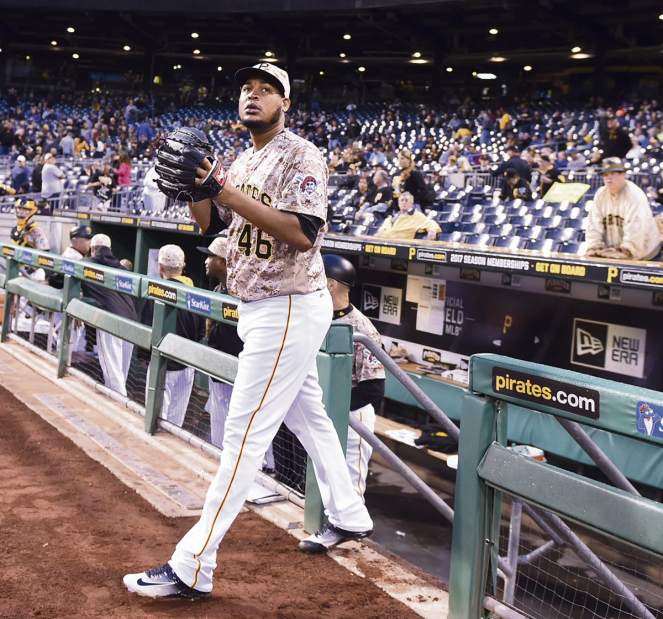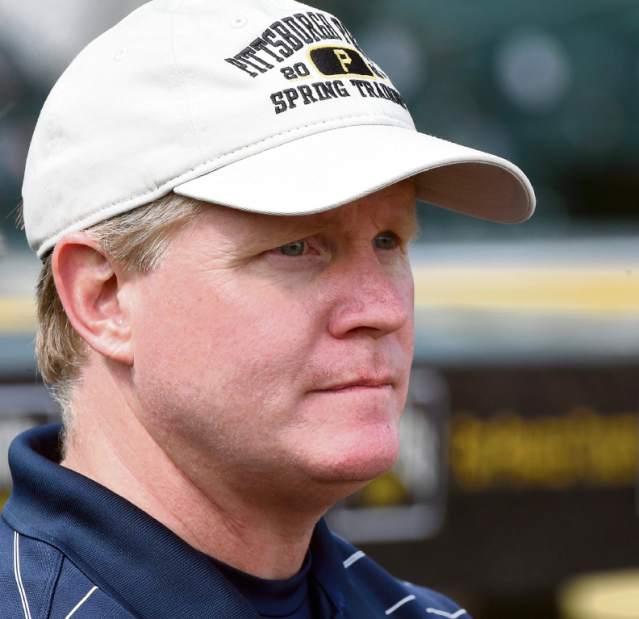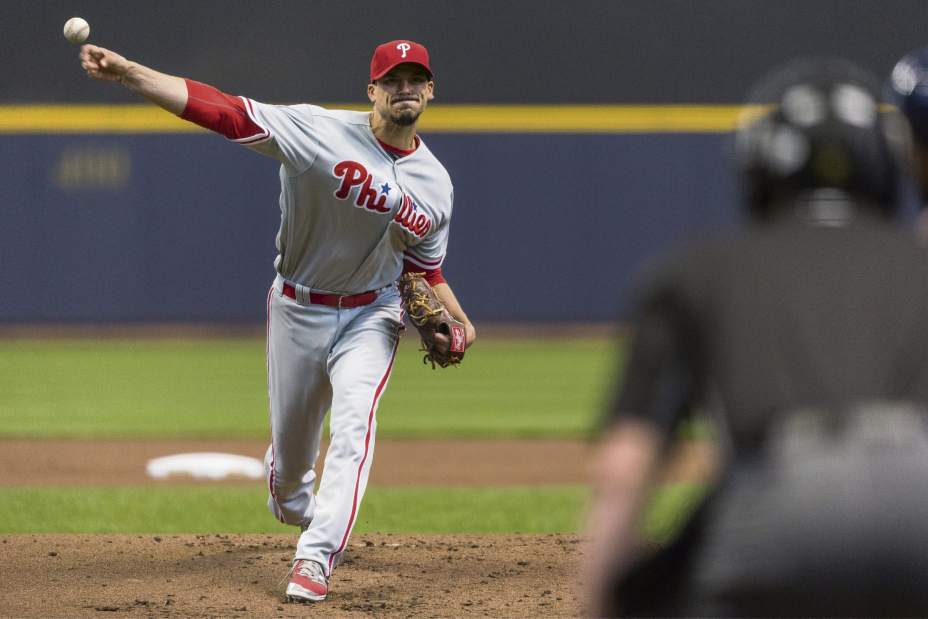Pirates' competitive edge gone as others join reclamation project search
NATIONAL HARBOR, Md. — The Pirates are watching a competitive advantage evaporate on the east bank of the Potomac River.
Last winter, the Pirates were reportedly outbid by the Oakland A's by $500,000 for Rich Hill, one of the most intriguing reclamation-project pitchers available. Hill signed a one-year, $6 million contract.
On Monday at the winter meetings, Hill signed a three-year, $48 million deal with the Dodgers. A sabermetric darling, Hill is still fraught with risk after pitching in independent ball as recently as 2015, but he is loaded with top-of-the-rotation upside.
Hill is the type of rebuild the Pirates were so successful in signing and extracting value from during their 2013-15 playoff run, so successful the club could have been the subject of a flip-for-profit HGTV reality show. Francisco Liriano and Edinson Volquez via free agency, and A.J. Burnett, J.A. Happ and Mark Melancon via trade, all produced significant value at discounted prices for the Pirates. Now that market is drying up as it becomes more competitive, as teams become more liked-minded and armed with more data.
This market is perhaps more concerning than what happens with Andrew McCutchen. The Pirates allowed 162 more runs in 2016 than in 2015.
“There is no question it has become more of a challenge,” Pirates general manager Neal Huntington said. “There doesn't seem to be as many (pitchers) that we've been able to identify. The traits we've liked in the past, they've been more difficult to acquire because teams are paying for them. They recognize we've had some ability to return some value on some guys coming off down years or injuries. There is a higher competition level, and supply is down, and as a result cost goes up.”
A year ago in his hotel suite in Nashville, Tenn., Huntington quipped to reporters — perhaps only half-kiddingly — that reclamation-project pitchers should pay the Pirates for the right to pitch in Pittsburgh and rebuild their careers.
Dollars continue to be an issue for the Pirates.
From 2014-16, the average per-year contract of a free agent starting pitcher increased 105 percent, from $7.1 million to $14.6 million.
During that three-year span, the Pirates' opening day payroll increased 39 percent ($71.9 million to $99.9 million).
Quite simply, the starting pitching market is outpacing the growth of the Pirates' payroll.
Thus far this offseason, Andrew Cashner signed a one-year, $10 million deal with Texas after posting a 5.25 ERA last season. Former Pirates pitcher Charlie Morton signed a two-year, $14 million deal with Houston, despite his injury history. When asked if the club still is targeting Ivan Nova, another Pirates' rebuild, Huntington said Tuesday he is engaged in “dialogue” on “multiple” fronts.
While the Pirates' 2017 rotation figures to be young and largely homegrown, Huntington would like to add a veteran presence.
“We'd be comfortable adding one. We'd be comfortable adding nobody if it's just not there,” Huntington said. “We don't feel we are driven to force it. … It's one of those years where it's not a great free agent class so it generates more trade discussion. But it also generates higher prices in trade acquisition costs.
“(The market) also reminds us how important it is to develop our own pitching … We do feel good about our young arms at the major league level, and we feel good about waves coming behind them.”
Too add veteran help, Huntington indicated the club might have to drift from its preferred model. The Pirates moved away from the ground ball last offseason, in part because Huntington said the game has begun to value it more.
The Pirates went away from their preferred model in acquiring Jon Niese and Ryan Vogelsong (lesser stuff, perceived higher floor) and Neftali Feliz (fly-ball pitcher). After ranking second in baseball in ERA from 2013-15 (3.33), the Pirates ranked 18th (4.22)
The one pitcher the Pirates signed to date, Wade LeBlanc, is a fly-ball pitcher with a 35.5 percent groundball rate for his career. From 2013-15, the Pirates led baseball in ground-ball rate. Last year, they fell to fourth.
“We're a copycat industry,” Huntington said. “There's more teams beginning to value players in a similar way. We need to push forward and … find value in different spots than we did in prior years.”
Travis Sawchik is a Tribune-Review staff writer. Reach him at tsawchik@tribweb.com or via Twitter @Sawchik_Trib.



